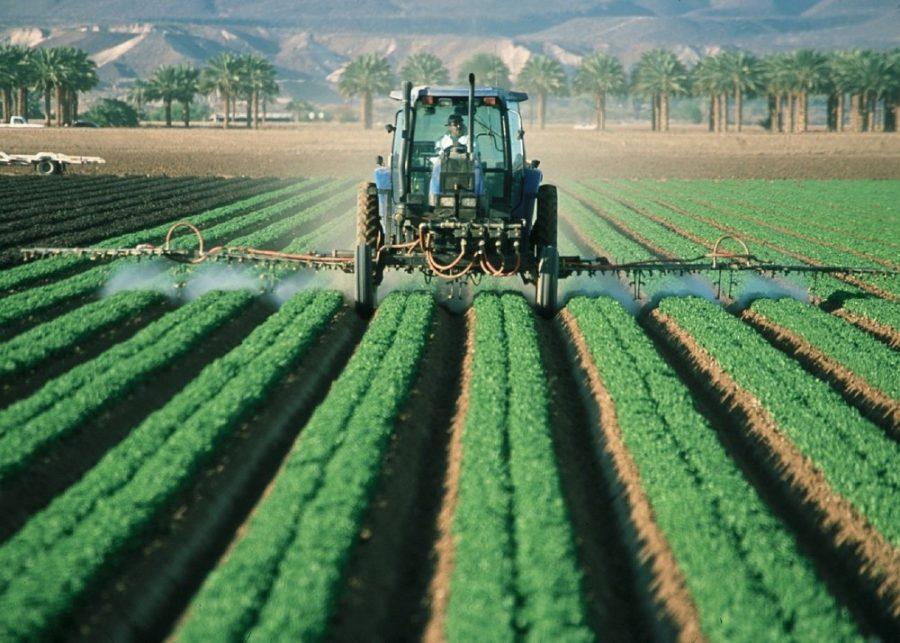UA is currently working to develop a camera-based spray system that will improve the accuracy of chemical applications to agricultural crops across the country.
The goal of the project is to develop a high-tech spraying system that will apply precise amounts of herbicides to weeds without contaminating any of the crop plants, said Mazin Saber, a post-doctoral research associate specializing in agricultural engineering.
One of the many benefits of the sprayer system is its ability to reduce the quantity of herbicides that come in contact with the environment.
“Basically, we try to deliver the minimal amount of chemicals that can do the job without any extra dose to the soil [or the] water,” Saber said.
In order to accomplish this, the spray system utilizes a camera-based imaging system to identify and target weeds.
“It utilizes a precision sprayer to target individual weeds, and our goal is to have it work at the centimeter-level scale of accuracy,” said Mark Siemens, UA associate professor and specialist of agricultural and biosystems engineering.
RELATED: UA grad student researches impacts of drought on rural California
As the spraying machine travels through the field, a camera mounted within the assembly takes pictures of the ground, Saber said. The processing program then transforms the picture into a grid cell, just like placing a transparent grid over a photograph.
Saber added that each cell measures a centimeter square in size. Once the camera has mapped the ground into tiny squares, it will send a signal to the sprayer to hit only squares containing the leaves of the weed.
However, the camera doesn’t just need to be used to identify harmful weeds in the field. According to Siemens, it could also target the crop plants in order to spray insecticides.
“Since the system will know where the crop plants are, in addition to the weeds, you could target a specific insecticide to the crop plant and that would save a tremendous amount of insecticides,” Siemens said.
Saber is currently working to find the perfect combination of the solenoid valve, or sprayer assembly, and the amount of herbicide released.
Imagine if you have weeds growing very close to the crop plant but you only want to target the weed, Saber said. The challenge is to find the right formula that will release enough herbicide to kill the weed but not come in contact with the plant.
“If you have something you spray, it can splash on the plants close by,” Saber said. “So we want the right formulation that can help to reduce that splash on the plant.”
If the herbicide were to end up on the crop plant, it could have severe effects.
Not only would it kill the plant, but it could contaminate the soil and runoff water. Unlike traditional methods of herbicide application, such as hand or broadcast spraying, this new machine will greatly reduce the likelihood of that happening, Saber said.
RELATED: Rooftop garden competition highlights the future of food production
According to Siemens, the camera and spray system are enclosed in a five-sided box with an open bottom so that the images are not affected by wind or light. The machine also provides artificial lighting in order to create consistent, high-resolution images, Siemens added.
Besides the benefits to the environment, the new spraying machine will provide a much-needed solution for farmers in large-scale commercial agricultural production.
“With the cost of labor increasing and stricter immigration policies, the industry is facing a higher cost and labor shortage,” Siemens said.
Many of the growers employ laborers to pick the weeds by hand because herbicides haven’t been developed yet to specifically target crops such as lettuce, broccoli or cauliflower, Siemens said. Addressing the problems farmers are facing in regards to labor has been a drive for the development of this sprayer system.
“Basically in the long run, the machines will be more profitable for the farmers because first the machine never gets tired, it’s faster and more accurate to do the job,” Saber said.
UA is partnered with University of California Davis and Washington State University on the project. Though the machine has not been tested yet, this summer the team plans to integrate the spray system with the vision system, which is being developed by UC Davis, Siemens said.
The project is in its third year of development and is sponsored by a $2.7 million U.S. Department of Agriculture National Institute of Food and Agriculture Specialty Crop Research Initiative Grant.
Follow Hannah Dahl on Twitter.















